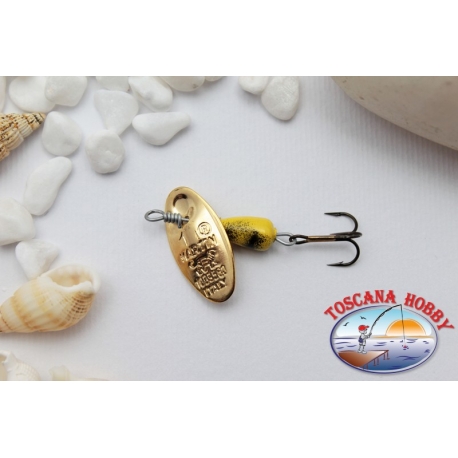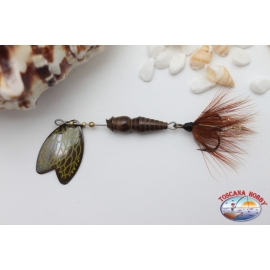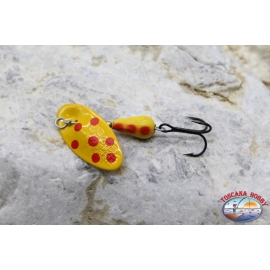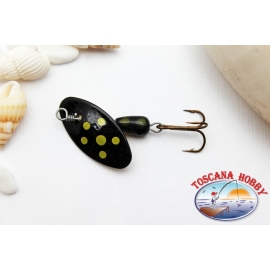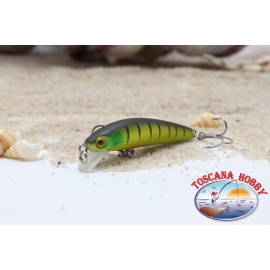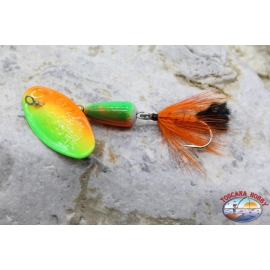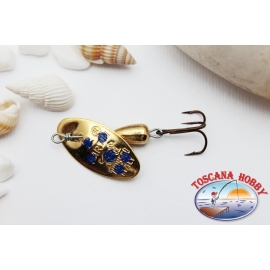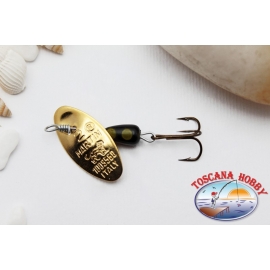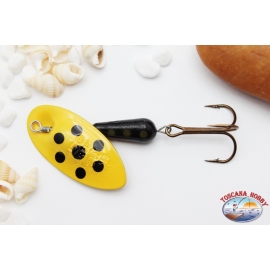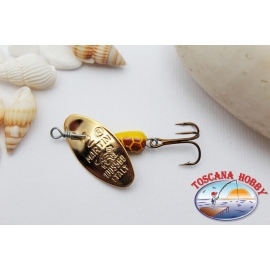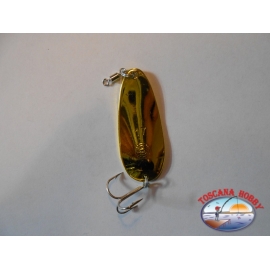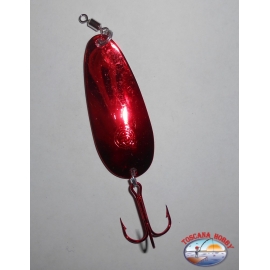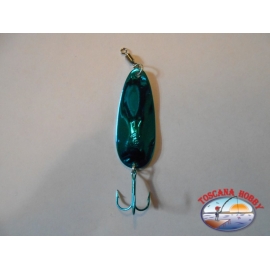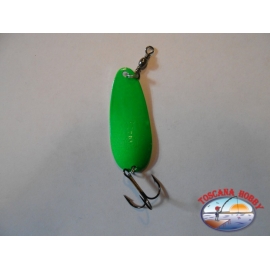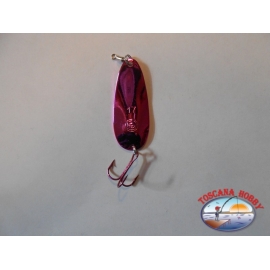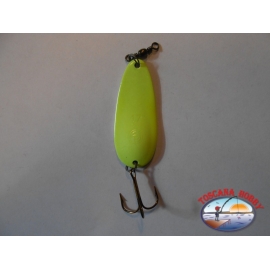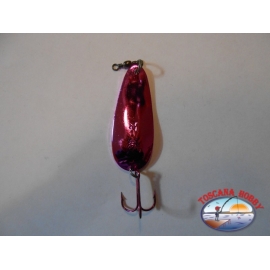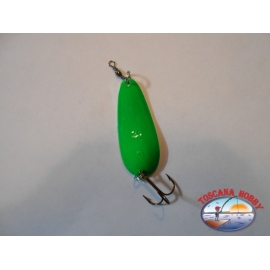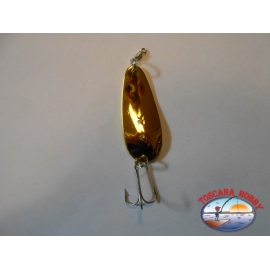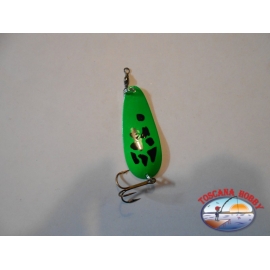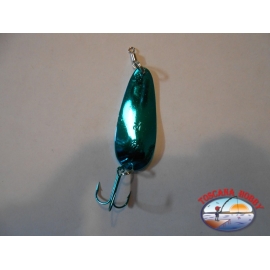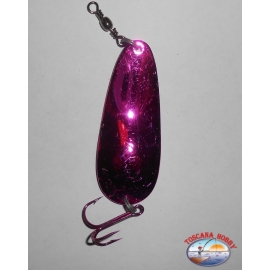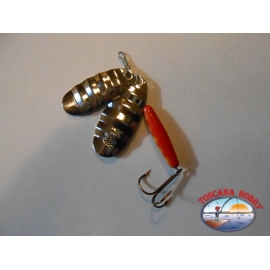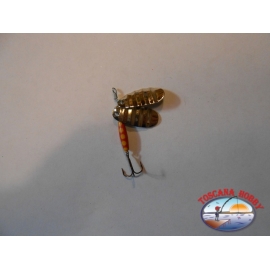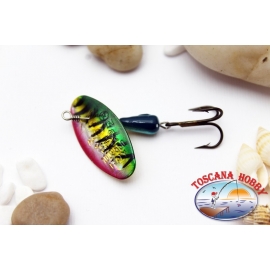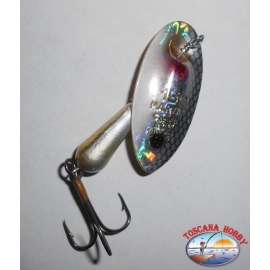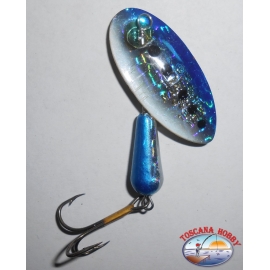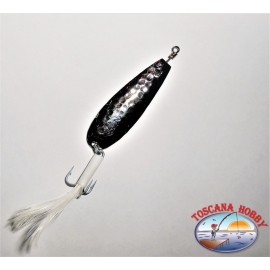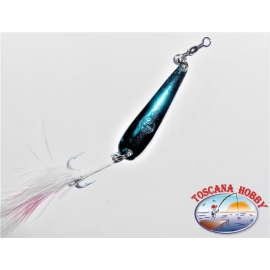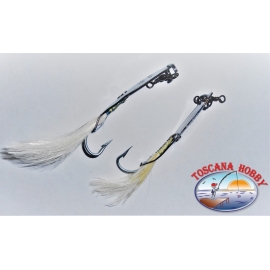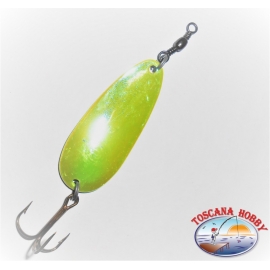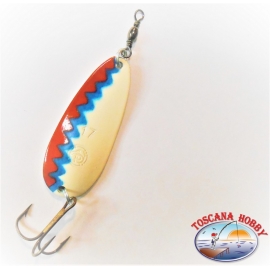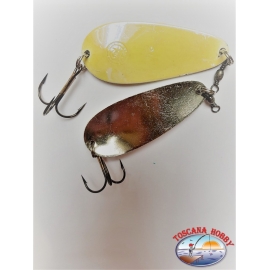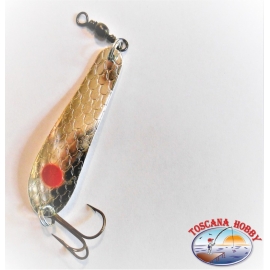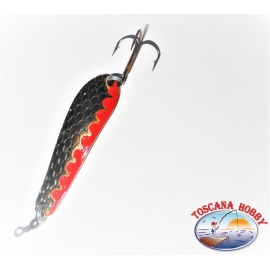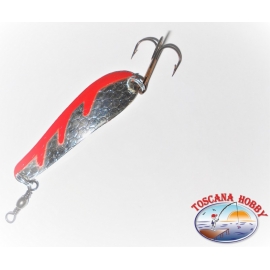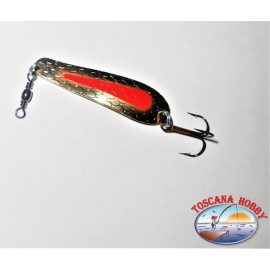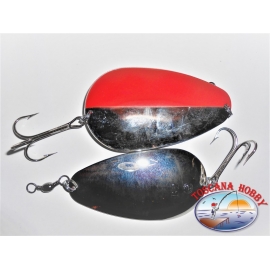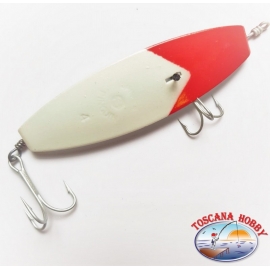Spoon baits, Panther Martin gr. 1.R17
R17
New
Spoon baits, Panther Martin gr. 1,00
This product is no longer in stock
Data sheet
| Grammatura | 1,00 |
| Tipologia | Rotante |
More info
Spoon baits, Panther Martin gr. 1,00
(each object is as shown in the picture)
--- --- ---
Guide to the use of Teaspoons Rotating and Undulating
The teaspoons rotating is divided into two main categories, those type of Martin, with a scoop placed directly in the axis, and those type of Mepps, the pallet is inserted in the shaft through the use of the b and b. The behavior in water are different.
Teaspoons type Martin (with shovel inserted directly on the axis)
Have the paddle inserted directly in the axis, and a housing that can be drop-shaped or tapered. A lead is more concentrated towards the bottom (drop) keeps the best of the bottom in the current, unlike a more stretched, which also reduces the angle of rotation between the headstock and the axis, producing even less friction during the recovery, fostering more immediate action, and a ascent faster. The latter models can be deadly when predators attack in the surface layers. Other substantial differences are in the fact that Martin starts to flicker as soon as they touch the water and go down to the bottom, and also just for the fact to have the paddle inserted directly in the axis result in a rotation angle less than the Mepps, which determines less friction in the phase of recovery and a better seal of the fund. Against equality of grams you get shorter casts with the lures with b and b, because in the latter the pallet, tipping over, it offers less friction in the air.
Teaspoons type Mepps (with the headstock with b and b)
As said, the scoop is inserted in the axis by b and b, allows this type of teaspoons a greater casting distance and an angle of rotation exceeding that determines a alone larger. Not only is this the only difference, but it also has a greater number of vibrations in the water, because the paddle wheel faster. The latter can be elongated, so-called "willow leaf", or more rounded, with the difference that the first to cut the current and holds better to the bottom.
Teaspoons Tandem
For both of the spoons mentioned above, you may also have versions of the tandem, i.e., in practice, rotating with two (sometimes even three) palette, which have the advantage of being able to be thrown farther while maintaining a profile content. This artificial manages to produce a great turbulence in the water, attracting the attention of all the big predators. Can be divided mainly into two categories, with lead-single or double lead. The first, regardless of their weight, they pull back during the recovery, the second ones have a better seal on the bottom. They are ideal for removing fish intanati on the deep layers, especially in the winter, or to awaken a listless fishes, .
Teaspoon Hair
These artificial are among the oldest lures that man has made. Probably even the primitive men them made with pieces of bone worked and shaped. The hair is a bait extremely versatile, customizable and lends itself to an infinite number of recoveries, you will not find almost never the two fishermen, who use it in the same way. Are not artificial, easy-to-use as the rotary, but once learned can really make the difference. First of all, you need to pay attention to the choice of the weight and shape depending on where we fish. Heavy-duty models of compact shape are preferable to probe the lowest layers of the seabed. Vice-versa, we will use models that are lightweight and the wide profile and thinner due to the recovery in the surface layer, or slip, for example, in the vicinity of a caffeine free herbal tea. Already in the phase of the fall have a movement flickers much priming, and in this moment we already have an attack by the fish, so you need to keep immediately in full contact with the artificial. Once you have reached the desired depth, we can start the recovery process: a linear very-fast or slow, in small bursts or long pulls with subsequent releases with the barrel more or less inclined, there is no way better than another, it will only be the experience of the fisherman to indicate the recovered most profitable in that particular place at that time. In principle, if the movements will be slow and the hair will make the shatter more extensive and represents the low-frequency vibrations, which are the most sensitive fish less active (for example in the cold season). On the contrary if recovered or "a string of pulls" the faster the oscillations will be more rapid, causing vibration at high frequency, suitable for the fish very active. The only caution that we must always have is to never retrieve too quickly, or to give blows of the cane too violent, because we will get only the effect "spoon", that is, we will be turning the hair on its axis effect on the function of this artificial.
Colors
There are no colours, always extremely capturing. Only the experience of the fisherman can determine which color in a given time and place makes more. However, we can affirm that, in principle, with the clear waters and the sunny weather it is recommended to use dark colors and opaque (even gold), because the reflection of the headstock in silver may disturb the fish, while with conditions of scarcity of light or turbid water, can prove to be more capturing the brighter hues, such as silver or fluorescent colors.
The use of tails and feathers
Increase the vibrations in the water, resulting in greater power capturing moving fish are particularly lethargic. Can be made of flakes of wool, or natural feathers. Generally, the former are more suitable for perch and pike, the latter for trout and chub.

